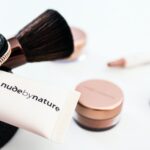Table of Contents
In this blog, we’ll journey through the halls of dermatology, exploring the intriguing chemistry between your fresh tattoo and Cetaphil lotion. We’ll unpack the basics of tattoo aftercare, discover why moisturizing is crucial, and discuss the qualities that make a lotion safe for tattoos.
We’ll also unravel the secrets of Cetaphil, the beloved skincare staple, and find out whether it’s a friend or foe to your fresh ink. Along the way, we’ll debunk some myths, shatter some preconceptions, and, most importantly, enlighten you with expert advice and scientifically-backed information.
So, sit back, relax, and delve into the world of tattoos and skincare together. Whether you’re a tattoo newbie, a seasoned skin-art enthusiast, or just curious about innovative beauty care, there’s something for everyone in the following lines. Ready to peel back the layers of this topic? Let’s get inked…figuratively, of course!
The Cetaphil Story: Not Just Another Lotion
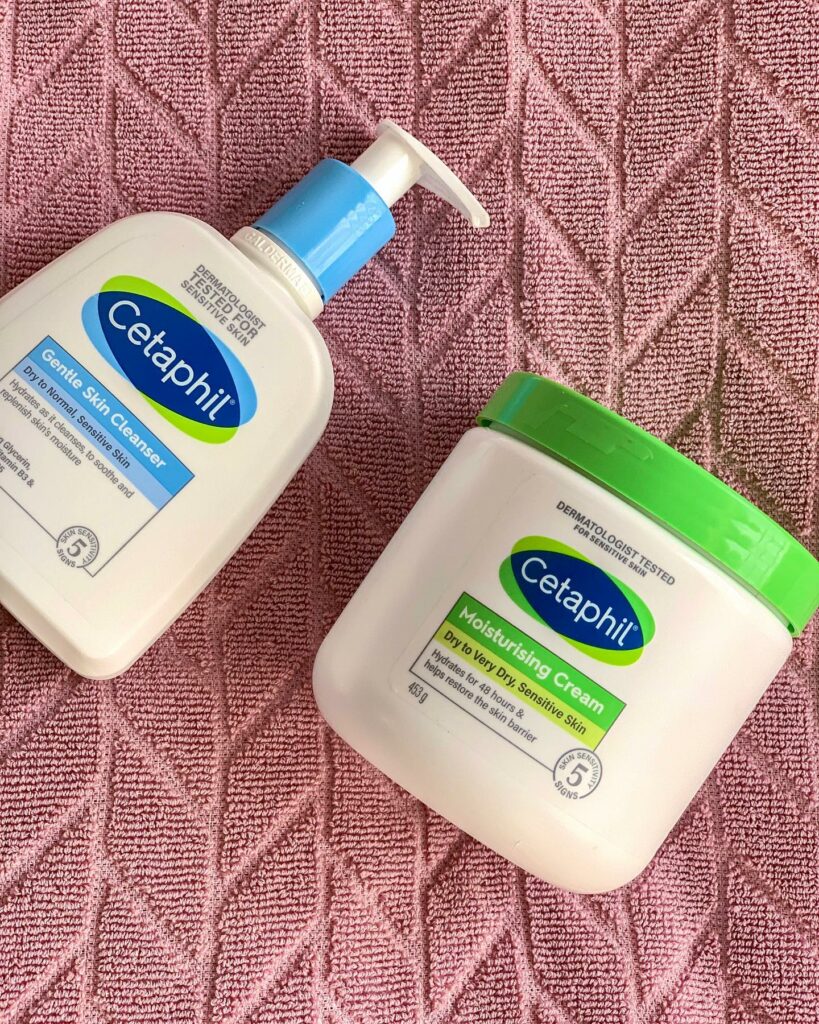
Once upon a time, a humble bottle of Cetaphil Moisturizing Lotion in a bathroom cabinet not too far away saved my skin from the clutches of dryness during a particularly harsh winter. From that day forward, it became a staple in my skincare regime.
This daily facial and body moisturizer keeps skin supple, radiant, and happy, boasting a cocktail of super-hydrating ingredients. Designed specifically for normal to dry skin, it’s clinically proven to provide 24-hour hydration. Its unique combination of shea butter and Pro-Vitamin B5 restores natural softness, prevents moisture loss, and soothes irritation.
Not only this, but Cetaphil contains non-comedogenic ingredients, meaning it’s a boon for even the most sensitive skin types. I’ve often recommended it to friends with eczema, psoriasis, or rosacea, and it’s also great for sunburns and chapped or peeling skin.
Plus, with its oil-free formula, this lightweight lotion doesn’t leave a greasy residue—just smooth, nourished skin.
The Power Players: Key Ingredients in Cetaphil Moisturizing Lotion
Cetaphil’s superpower comes from a blend of skin-loving ingredients that leave you feeling refreshed and hydrated. It contains humectants and emollients like panthenol, glycerin, and mineral oil. These mighty molecules help your skin draw in and retain moisture.
Cetaphil also includes sweet almond oil, a savior for dry skin, and vitamin E, a natural protector against environmental damage. Together, they form a dynamic duo that fights dryness and irritation, relieving and revitalizing your skin.
Why Cetaphil Could Be Your Skin’s Best Friend
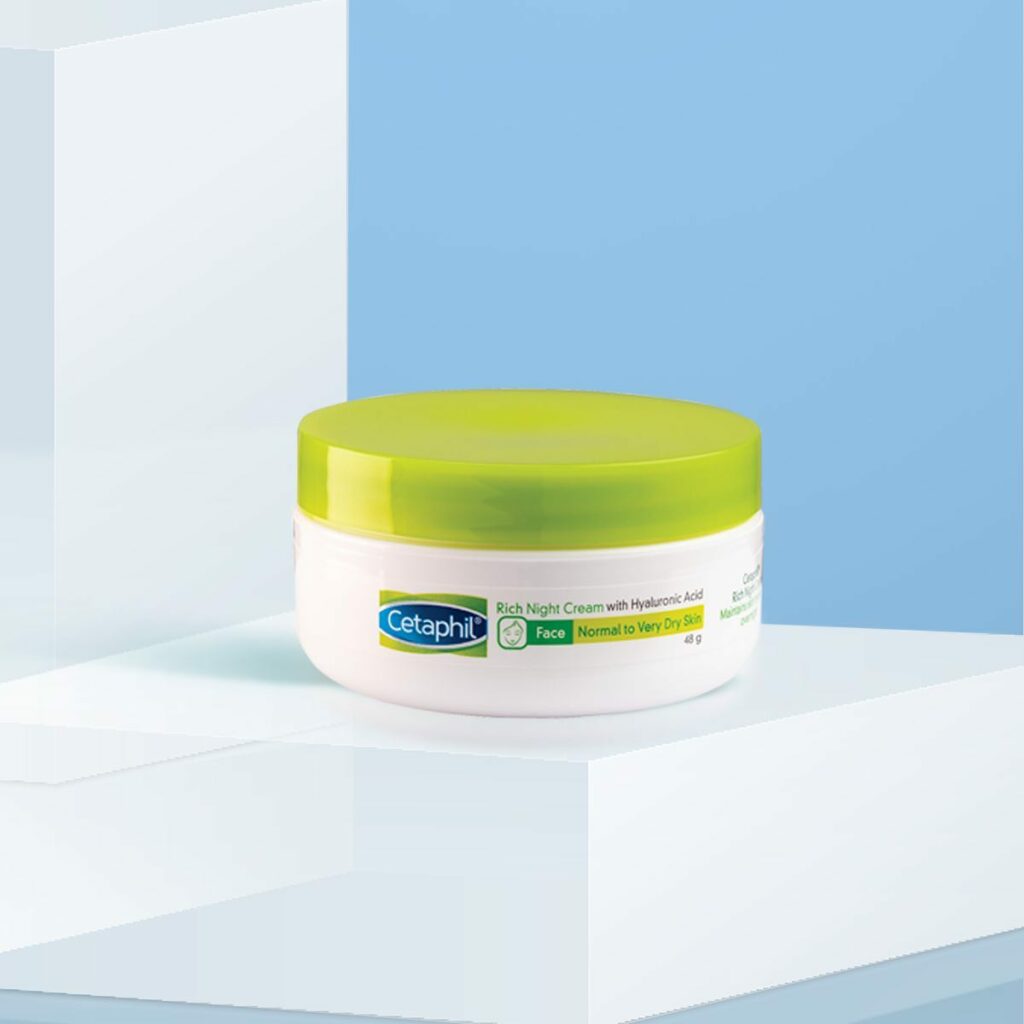
Why do I keep a bottle of Cetaphil on my bathroom shelf? Because it offers long-lasting hydration and nourishment, creating a protective barrier that shields my skin from environmental elements.
This lotion has a knack for keeping my skin looking youthful and radiant. It replenishes natural oils, preventing my skin from turning into a dry, flaky desert and ensuring it stays soft, smooth, and glowing.
Key ingredients like ceramides and glycerin enhance overall skin hydration and texture, making your skin feel softer, smoother, and more radiant.
Rolling Out the Cetaphil Red Carpet: Safe for Tattoos?
A fun fact about me: My first tattoo was a tiny heart on my wrist. Along with it, I inherited a thousand questions about tattoo care. One is, “Can I use my beloved Cetaphil on this fresh piece of skin art?” The answer? Absolutely, but with a caveat. While Cetaphil is mild, gentle, fragrance-free, and free of harsh chemicals, making it safe for all skin types (including freshly inked ones), it’s crucial to apply it sparingly.
Why, you ask? Remember when I slathered on too much lotion after a day in the sun, and it felt like my skin was doing the cha-cha under a blanket? It’s the same with tattoos. Overdoing it can irritate the skin around your tattoo or even cause fading over time. Excessive moisture and friction can slow the healing process and risk infection.
My trick? I mix a small amount of Cetaphil with water before applying it to my tattoo. This ensures even coverage and prevents me from going overboard with the lotion. Remember, your skin needs time to absorb the product, so don’t rush the process. And, of course, always maintain good hygiene and avoid extreme temperatures that could irk your new masterpiece.
Delving Deeper: Cetaphil’s Ingredients and Tattoo Safety
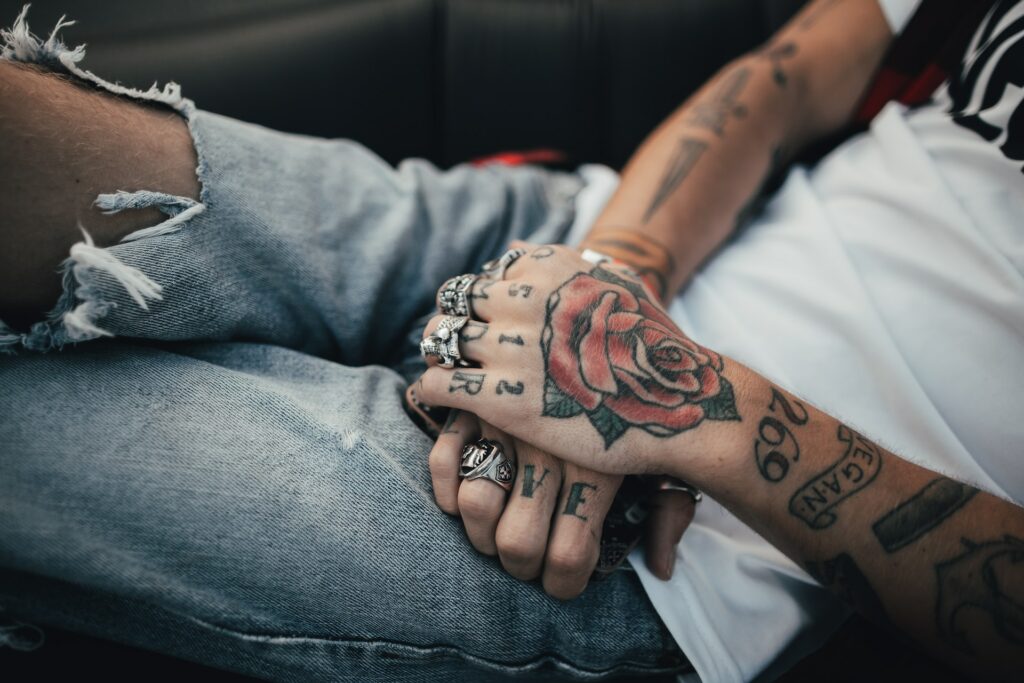
The million-dollar question is: Is using Cetaphil on fresh tattoos safe? While no evidence suggests harm, understanding its specific ingredients is vital before slathering it onto your new art piece.
Cetaphil features a blend of mild detergents and emollients like cetyl alcohol, lanolin alcohol, glycerin, and petrolatum, which work wonders on the face and body. But new tattoos? That might be a different story. One ingredient to note is sodium lauryl sulfate (SLS), a potential irritant for sensitive skin. Many tattoo artists recommend removing SLS-containing products until your tattoo has healed.
Before committing to any moisturizer (Cetaphil included), it’s wise to consult with your artist or dermatologist. Generally, they advise sticking to simple, fragrance-free products like petroleum jelly during the healing phase to minimize irritation and risk of infection.
As someone who’s walked the tattoo aftercare path, it’s best to refrain from applying lotion for the first ten days post-tattoo. If your skin yearns for hydration during this time, an excellent alternative could be a thin layer of Vaseline. It’s devoid of additional chemicals in over-the-counter creams, reducing the risk of allergic reactions or irritation.
Star of the Show: Best Cetaphil Product for Tattoo Healing
As a lover of ink and skincare, the crown jewel for tattoo healing in the Cetaphil line is their Daily Advance Ultra Hydrating Lotion. This gem is packed with three essential ceramides and fatty acids that lock in moisture, bolster your skin’s protective barrier, and keep your tattoo’s color looking fresh.
Moreover, it absorbs quickly, so you don’t have to worry about feeling like a greased-up bodybuilder post-application. It’s a tattoo healer and a universal skincare champion, suitable for all skin types, including sensitive ones. So, even if you’re tattooless (for now), this lotion is still a great addition to your skincare routine.
Battle of the Lotions: Aquaphor vs Cetaphor Lotion
Our skin is like a canvas, and a fresh tattoo is like a vibrant painting. And just like paintings need care to stay vibrant, so do tattoos. Aquaphor and Cetaphil Lotion are two products that often grace the shelves of tattoo aftercare.
Aquaphor Healing Ointment is like that friend who’s always got your back. It’s an ointment that locks in moisture for your newly inked skin, providing relief from any itchiness or irritation. It also creates a protective layer against those pesky outside elements, helping to prevent infection and keeping your tattoo from becoming dry and flaky.
On the other hand, Cetaphil Lotion is a gentle giant with excellent antibacterial properties. It’s like the guardian angel for your new tattoo, preventing bacteria from entering the wound site while its nourishing ingredients replenish lost moisture and keep your skin hydrated.
You might be thinking, “Hey, they both sound great!” And you’re not wrong. But remember, they serve different purposes. If you’re seeking something to provide extra coverage and relief from the initial discomfort, Aquaphor might be your best bet. However, if you need bacteria protection and moisture maintenance, Cetaphor Lotion could be your go-to.
Cleaning 101: Your New Tattoo’s Best Friend
We all know the excitement of a fresh tattoo. I remember when I got my first, a beautiful butterfly on my shoulder blade, and I couldn’t wait to show it off. But remember, with great tattoos come significant responsibilities. The most important? Keeping it clean!
Step one: wash your hands with warm water and antibacterial soap. We want to avoid any dirt or bacteria coming into contact with your tattoo. Trust me, I once skipped this step and spent a week worrying about an infection!
Next up, apply a thin layer of antibiotic ointment like Bacitracin or A&D Ointment after using a tattoo cleanser. Wipe off any excess each morning and evening, especially after activities that make you sweat. After a hot yoga class turned my tattoo area into a sticky mess, I learned this the hard way.
Remember always to use mild, unscented antibacterial soaps when cleaning the area. The last thing your new tattoo needs is a fragrance party that irritates the skin. Also, avoid soaking your newly inked skin in bathtubs, pools, or other moisture-rich environments. Instead, rinse with lukewarm water and pat dry gently with a clean towel or paper towel.
Drying and Beyond Keeping Your Healing Tattoo Happy
Once you’ve cleansed your healing tattoo, it’s essential to pat it dry with a clean cotton towel. Note: Pat, do not rub! We want to treat our new skin art to ensure smooth healing gently.
Avoid paper-based cloth like Kleenex, which can leave behind fibers on your freshly healed skin. A friend shared a horror story about fibers getting attached to their tattoo. Not a situation we want to find ourselves in!
Once the tattoo is dry, remember to moisturize the area. This step is like the cherry on top of your tattoo aftercare sundae. Keeping your healed tattoo hydrated will help preserve its bright and vibrant colors, ensuring it stays as beautiful as the day you got it.
How Often to Moisturize: Tattoo Lotion Application
The journey to a beautiful, healed tattoo is a marathon, not a sprint, and hydration is critical! Applying a thin layer of tattoo moisturizer or ointment 2-3 times daily for at least two weeks is crucial for healing. Think of it as watering a delicate plant – not too much, not too little, just right.
Think of your tattoo as a delicate newborn during these two weeks. Be extra careful about bathing, swimming, and sun exposure. My experience with the surprise sunburn I got on a cloudy day is a story for another day, but let’s say it’s a situation you’ll want to avoid!
When it comes to choosing the suitable lotion or ointment, stick to hypoallergenic products with limited ingredients. This minimizes the risk of an allergic reaction – because, trust me, a rash on a fresh tattoo is not fun (yes, I’m speaking from experience!). Regular moisturizing ensures proper healing and gets you to that ‘show-off’ stage much sooner.
The Healing Chronicles: What to Expect
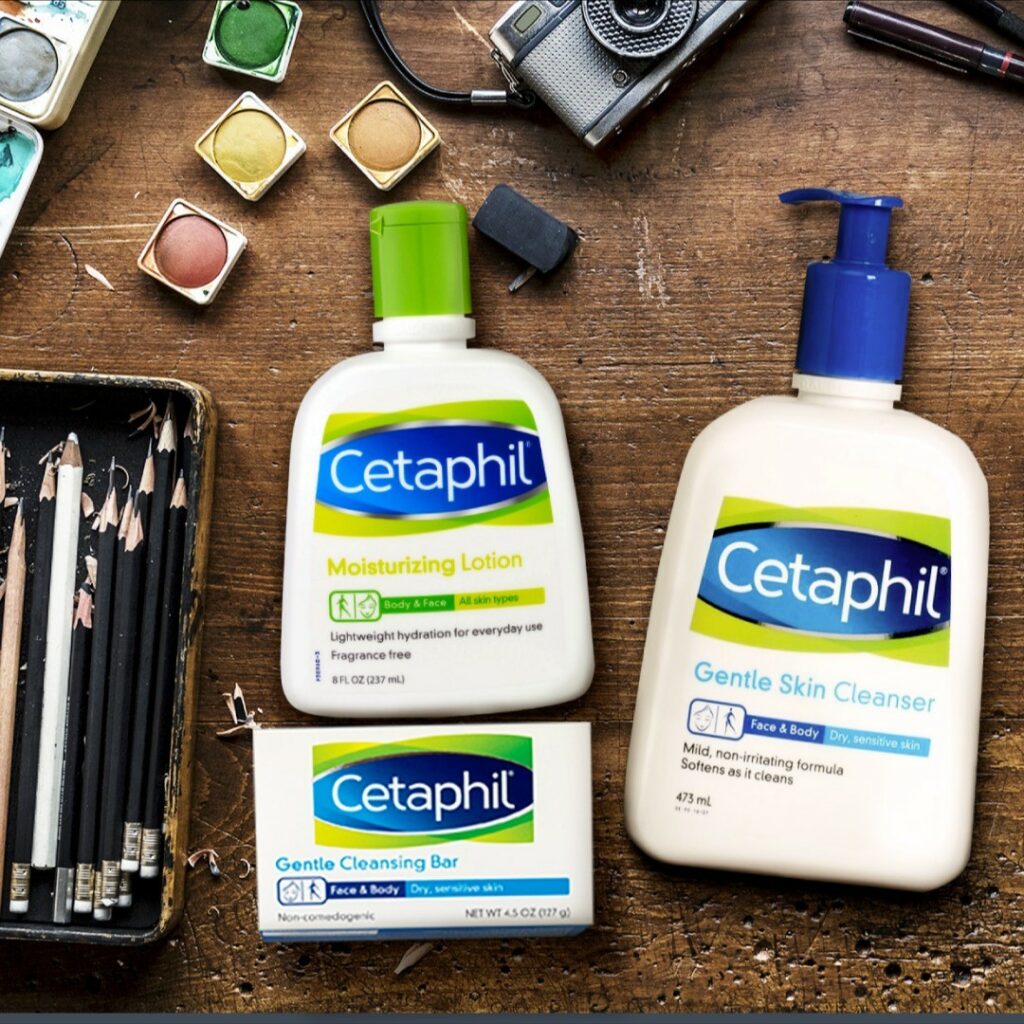
When you first get your tattoo, it will probably not look like what you expected. It’s like getting a new haircut – settling in permanently takes a few days.
In the beginning, expect some redness and swelling, and the area will be sensitive to touch. It might be terrifying but don’t worry; it’s all part of the process. Make sure to skimp on the moisturizer during this time!
As the fresh ink becomes a part of you, your tattoo will begin to fade in color and develop a slightly raised, glossy texture. This is thanks to the protective top coat applied post-session. You’ll probably have a bandage on to protect it, like a safety blanket for your new artwork.
Most of the tenderness should be gone about three weeks in, but that doesn’t mean it’s fully healed. Keep in touch with your tattoo artist for care instructions, and continue to be vigilant with cleaning and moisturizing.
At this stage, you may notice that some areas have excess pigment on top or underneath the skin. This is pretty common, and it’s why touch-ups exist! Schedule regular check-ins with your artist to address any potential fading issues. This is how you ensure your artwork remains as stunning as the day you got it!
The Basics of Tattoo Aftercare and the Importance of Moisturizing
Oh hey, ink enthusiasts! It’s your friendly neighborhood beauty blogger here, ready to spill the tea on tattoo aftercare. So, you’ve just got a new tattoo and it’s looking absolutely fabulous! But, remember, taking care of your tattoo during the healing process is just as important as choosing the perfect design. Let me break down the basics of tattoo aftercare for you.
Firstly, when it comes to tattoo aftercare, cleanliness is king. After a few hours, gently remove the bandage your tattoo artist placed on your new artwork, and wash the area with warm water and a gentle, unscented soap. Please, no scrubbing! Treat it like a new-born baby, tender and delicate.
The next step is – you guessed it – moisturizing! Think back to that one time you got a paper cut (I mean, who hasn’t, right?) and the little bugger just felt so dry and tight, didn’t it? Your tattoo is the same, but on a larger scale. It’s basically a lovely, artistic wound that needs some serious TLC. Moisturizing helps to relieve that tight feeling, reduce itching, and prevent any unwanted peeling or scabbing.
In my journey through countless tattoo sessions (yes, I might be slightly addicted), I’ve found that the perfect moisturizer is a make or break factor in the aftercare process. A good moisturizer will not only help with the healing process but also help retain the vibrancy of your tattoo for years to come.
So, there you have it! Tattoo aftercare is a must if you want to keep that ink looking as fabulous as the day you got it. Remember, a little time spent caring for your tattoo in the early days can save you a lot of worry later on. Plus, you want to keep that gorgeous piece of artwork looking its best, don’t you?
In a nutshell, the golden rule of tattoo aftercare is this – keep it clean, keep it moisturized, and keep it safe from the sun. Follow these steps, and you’ll have a stunning tattoo that will look fabulous for many, many years. Happy healing, folks!
Can You Use Cetaphil Lotion on Fresh Tattoos?
Now, we all love a multi-use product, right? Cetaphil is one of those all-rounder lotions that’s great for sensitive skin – it’s mild, hydrating, and the best part? It’s fragrance-free, so no worries about irritating scents. But when it comes to using it on new tattoos, that’s where the road gets a little winding.
From my personal experience (and yes, I have quite a bit of body art), it’s always best to opt for a specialized tattoo aftercare product. Why? Because these products are specifically designed to take care of your new ink, ensuring it heals properly and stays vibrant.
That’s not to say Cetaphil is off the table. Its gentle, hydrating formula can definitely help keep your skin moisturized, but if you’re planning to use it, there are a few things to keep in mind. Firstly, moderation is key. Slathering on too much lotion can over-hydrate your tattoo and potentially slow down the healing process.
And another pro tip from your friendly blogger – mix a small amount of the lotion with water for a thinner consistency that can cover your entire tattoo evenly without overwhelming your skin.
While there’s no definitive evidence that Cetaphil lotion will harm your fresh tattoo, it’s important to remember that it’s not specifically formulated for tattoo aftercare. So, it might be a good idea to have a chat with your tattoo artist or a dermatologist before you start your aftercare process with Cetaphil.
Remember, beauties, your new tattoo is a piece of art, and it deserves the best care. So, choose your aftercare products wisely and your skin (and tattoo) will thank you!
4 Key Ingredients in Cetaphil Moisturizing Lotion and Their Benefits
Cetaphil Lotion is a fan favorite for many of us, thanks to its skin-loving formula. Let’s take a little dive into its ingredient list:
- Cetyl alcohol: Don’t be scared off by the word ‘alcohol’ here! Cetyl alcohol is a fatty alcohol that’s really gentle and moisturizing.
- Lanolin alcohol: Another good ‘alcohol,’ lanolin alcohol is a great emollient that helps lock in moisture.
- Glycerin: A super common skincare ingredient, glycerin is a humectant, meaning it pulls in water from the air and locks it into your skin.
- Petrolatum: Also known as petroleum jelly, petrolatum creates a barrier on your skin that seals in moisture.
One ingredient to note, though, is sodium lauryl sulfate (SLS). This can be irritating for some people with sensitive skin. So if you know you’re prone to reactions, it might be best to avoid products with SLS when your tattoo is fresh and still healing.
But all in all, Cetaphil Moisturizing Lotion contains some truly hydrating ingredients that are fantastic for your skin – tattooed or not!
Conclusion
And there we have it, my darlings – your ultimate guide to tattoo aftercare! Remember, healing is a journey, and each tattoo is as unique as you are, so patience is your best friend. Keeping your new ink hydrated with a quality lotion or ointment 2-3 times a day, and avoiding irritants like sun and chlorinated water, is critical. Be aware of the changes in your tattoo, and don’t be alarmed by the slight fading or swelling – it’s all part of the process. Stay in touch with your tattoo artist for any concerns or touch-ups needed. As in all things beauty, knowledge is power – so armed with these tips, you’re now ready to navigate the post-tattoo phase confidently! Here’s to a fabulous, healthy tattoo that will reflect your unique story for years to come. And remember, your beauty shines not just from your new ink but from your spirit too. Happy healing, and until next time, keep glowing!
Feature image by Gabriel Nunes on Unsplash


